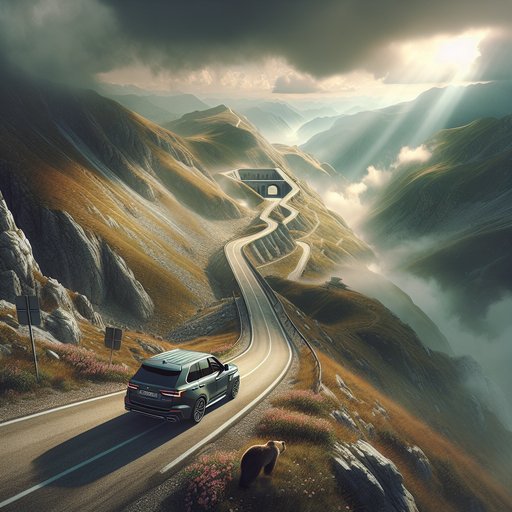
The Transfăgărășan (DN7C) crosses the Făgăraș Mountains between Curtea de Argeș and Cârțișoara, peaking at the Bâlea Tunnel near 2,042 meters. In summer, it’s a meticulous drive of hairpins, variable weather, and unexpected wildlife. A modest SUV like a Dacia Duster or a compact sedan works; good brakes and fresh coolant matter more than four-wheel drive. Plan July to September for open pavement, early starts for clear views, and midweek travel to avoid queues. This guide traces a practical August run toward Sibiu, with distances, time cushions, tunnel etiquette, and what to do when a brown bear ambles onto the verge.
We set out midweek in late August to reduce tour-bus traffic and afternoon storm risk. The target is a day run from Curtea de Argeș to Sibiu via DN7C and DN1, about 170 kilometers total, with 90–100 kilometers on the mountain section. Stakes are clear: the road closes seasonally, fog forms quickly above 1,800 meters, and brake fade or a rash pull-over near wildlife can turn a postcard drive into a problem. Before dawn we fuel fully in Curtea de Argeș—there are no stations on the high stretch—and check pads, fluids, and tire pressures.
Best months are July–September; the road usually opens late June and often closes by late October after early snows. If conditions deteriorate, the fallback is DN7/E81 through the Olt Valley, slower but all-season. We aim wheels rolling by 7:30 a.m. to reach the summit before midday clouds.
The first 35 kilometers to Vidraru Dam are shaded, with smooth pavement and low speed limits. We stop briefly for the dam overlook, then pass Arefu and the trailhead for Poenari Fortress. Gradients steepen past Capra Cabin, and the road tightens. From here, average speeds drop to 30–40 km/h.
Oncoming coaches swing wide on hairpins; we keep right, signal early, and remember uphill traffic has priority on narrow sections. Engine braking in second gear keeps rotors cool. Bâlea Cascadă appears around the 70-kilometer mark from Curtea de Argeș. The cable car to Bâlea Lac runs when the road above is closed in winter; in summer, we continue by car.
Air temperature falls sharply, and gusts push across exposed bends. The classic northern hairpins unfold after the lake, but we first crest the crest: Bâlea Lac’s paid parking fills by late morning, so we limit the stop to 20 minutes for weather watching and a quick coffee. The Bâlea (Capra–Bâlea) Tunnel is short—about 884 meters—but chilly, wet, and dim. Sunglasses off, headlights on, windows up.
The surface is damp with condensation, and crosswinds can slap at the portals. Speed holds near 40 km/h. Cyclists and motorbikes appear unexpectedly; we leave generous space and avoid stopping inside. Northbound, the spaghetti of hairpins down to Cârțișoara tests patience more than power.
We pace the descent, pull into bays to cool brakes if they smell hot, and keep eyes up for sheep, cattle, and, sometimes, brown bears. Bear-sighting etiquette is simple and strict: do not stop in the lane, do not feed, and do not approach for photos. We keep moving at a steady, safe speed, windows up, leaving room for the animal to retreat. If traffic banks up, we roll past without honking.
Authorities post warnings, and feeding wildlife may draw penalties, but the real risk is habituation—bears that learn cars mean food linger at blind curves. We report aggressive behavior to 112 once clear of the area. From Cârțișoara it’s roughly 56 kilometers on DN1 to Sibiu; we arrive mid-afternoon as storm clouds stack over the ridge. The lesson lands with the last kilometer: on the Transfăgărășan, timing and margins matter.
July to September gives your best shot at dry tarmac and an open summit, but an early start, a full tank, disciplined downhill technique, and respect for wildlife turn a famous road into a manageable, memorable day. We leave with cool brakes, clear photos, and a promise to come back on a crisp September weekday, when the air is sharper, the traffic thins, and the mountains feel closer.












